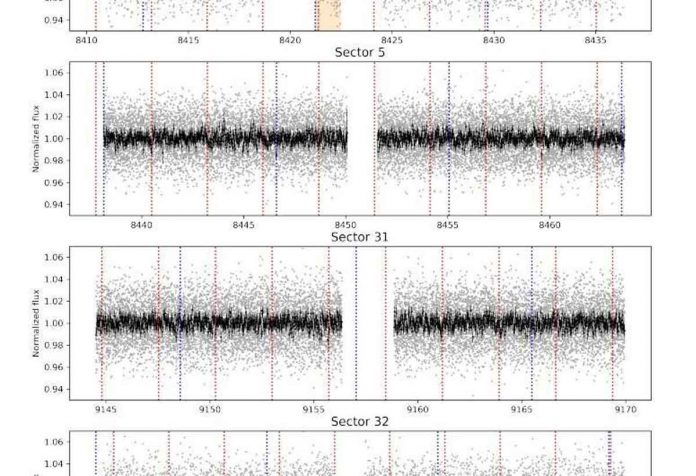Two brand-new “super-Earth” exoplanets have been found, according to a global team of astronomers, and they are in close proximity to a late-type M dwarf star. The two recently discovered alien worlds, LP 890-9 b and LP 890-9 c, are slightly bigger than Earth. The discovery was reported in the journal Astronomy & Astrophysics.
Planets that are heavier than Earth but not heavier than Neptune are referred to as “super-Earths.” Astronomers also use the term “super-Earth” to refer to planets that are larger than Earth but smaller than the so-called “mini-Neptunes,” despite the fact that it only refers to the planet’s mass (with a radius between two to four Earth radii).
Two new super-Earth class planets have now been found by astronomers led by Laetitia Delrez of the University of Liège in Belgium. Using NASA’s Transiting Exoplanet Survey Satellite, they observed the nearby M dwarf star LP 890-9, which has a spectral type of M6V. (TESS). This resulted in the identification of the inner planet as LP 890-9 b and its subsequent discovery. Following observations of this system with the Southern Observatory’s SPECULOOS (Search for Habitable Planets EClipsingULtra-cOOl Stars) telescope led to the discovery of LP 890-9 c, a second transiting planet with a longer period.
The researchers stated in their paper, “We have presented the discovery and preliminary characterization of the LP 890-9 system, which hosts two temperate super-Earths transiting a nearby M6 dwarf.
The estimated mass of LP 890-9 b is 13.2 Earth masses at a radius of approximately 1.32 Earth radii. The planet travels 0.018 AU from its host during each of its 2.73-day orbits. According to calculations, LP 890-9 b’s equilibrium temperature is 396 K.
Regarding LP 890-9 c, its mass is estimated to be less than 25.3 Earth masses and its radius to be close to 1.37 Earth radii. The exoplanet has an orbital period of roughly 8.46 days and is 0.04 AU away from its parent star. According to estimates, the planet’s equilibrium temperature is 272 K.
The radius and mass of the host star, LP 890-9, respectively, are 0.15 solar radii and 0.12 solar masses. This M dwarf has an effective temperature of about 2,871 K and a luminosity of 0.00143 solar luminosities. The distance between the star and the Earth is roughly 104 light years.
In summarising their findings, the astronomers noted that LP 890-9 is now the second-coolest star discovered to host planets after TRAPPIST-1. The second-most hospitable terrestrial planet with a known habitable zone, according to them, is LP 890-9 c.
According to the paper’s authors, the discovery of the remarkable LP 890-9 system “offers another unique opportunity to study temperate terrestrial planets around our smallest and coolest neighbours.”

